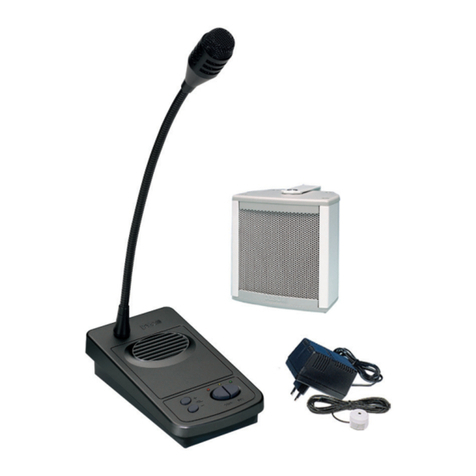
Istruzioni per l’uso PMB136
2-PMS2000 System -
Introduzione
Nel ringraziarVi per aver scelto un prodotto PASO, vogliamo
ricordarVi che la nostra azienda opera con sistema di qualità
certificato. Tutti i nostri prodotti vengono pertanto controllati in
ogni fase della produzione per garantirVi la piena soddisfazione
del Vostro acquisto. Per ogni evenienza la garanzia coprirà, nel
periodo di validità, eventuali difetti di fabbricazione.
Vi raccomandiamo di leggere attentamente le seguenti istruzioni
d’uso per sfruttare appieno le prestazioni offerte da questo
prodotto e per evitare eventuali problemi.
Introduction
While thanking you for having chosen a PASO product, we
would like to remind you that our company works according to a
certified Quality System. This means that all our products are
checked during every phase of manufacturing in order to ensure
that you will be fully satisfied with your purchase. In any case,
the guarantee will cover any manufacturing flaws during the
guarantee period. We recommend that you read the following
instructions for use and follow them carefully in order to exploit
in full the performance of this product and use it correctly.
SOMMARIO
1. Descrizione generale ........................................ 3
1.1 Pannello frontale ......................................................3
1.2 Pannello posteriore...................................................3
1.3 Microfono a stelo......................................................3
2. Montaggio .......................................................... 4
3. Impostazioni di funzionamento ....................... 5
3.1 Note generali ...........................................................5
4. Connessioni ........................................................ 5
4.1 Installazione.............................................................5
4.2 Connettore d’ingresso ..............................................6
4.3 Connettore d’uscita ..................................................6
4.4 Presa per alimentazione esterna ...............................6
4.5 Esempi applicativi .....................................................7
4.6 Alimentazione...........................................................8
5. Descrizione di funzionamento .......................... 9
5.1 Funzioni principali .....................................................9
A) Chiamata generale ............................................9
B) Chiamata di una o più zone di ascolto .................9
C) Annullamento di una selezione ...........................9
D) Chiamata interfono ...........................................9
E) Ascolto degli annunci
tramite altoparlante interno ...............................9
F) Impostazione del modo di
funzionamento del tasto microfono .................. 10
G) Memorizzazione dei tasti funzione .................... 10
H) Memorizzazione di gruppi di zone ..................... 11
5.2 Funzioni speciali...................................................... 11
A) Assegnazione dell’indirizzo logico ...................... 11
B) Assegnazione della priorità .............................. 12
C) Regolazione della sensibilità microfonica ........... 12
D) Inserimento filtro toni gravi.............................. 13
E) Esaltazione toni acuti....................................... 13
F) Funzione interfono .......................................... 13
G) Controllo remoto del sintonizzatore .................. 13
H) Display di stato delle linee................................ 14
5.3 Livelli prioritari ........................................................ 14
6. Lista degli accessori (opzionali) ..................... 15
7. Caratteristiche tecniche ................................. 15
Queste postazioni microfoniche sono parte integrante del
Sistema Modulare PMS2000.
Informazioni più dettagliate relative al Sistema si possono
reperire sui manuali d’istruzioni delle schede che lo
compongono. La postazione microfonica digitale PMB136
permette di gestire la chiamata a zone con più utilizzatori.
TABLE OF CONTENTS
1. General description ........................................... 3
1.1 Front panel ..............................................................3
1.2 Rear panel ............................................................... 3
1.3 Stem-mounted microphone .......................................3
2. Assembly ........................................................... 4
3. Operational settings ......................................... 5
3.1 General notes ..........................................................5
4. Connections ....................................................... 5
4.1 Installation...............................................................5
4.2 Input connector .......................................................6
4.3 Output connector.....................................................6
4.4 Outlet for external power supply ..............................6
4.5 Examples of applications...........................................7
4.6 Power supply ...........................................................8
5. Description of operation ................................... 9
5.1 Main functions..........................................................9
A) All call ...............................................................9
B) Calling one or more listening zones.....................9
C) Cancelling a selection ........................................9
D) Intercom call .....................................................9
E) Listening to the announcements
through the internal loudspeaker .......................9
F) Setting the functional
mode of the microphone key............................ 10
G) Storing zones in the function keys.................... 10
H) Storing groups of zones................................... 11
5.2 Special functions .................................................... 11
A) Assignment of the logical address .................... 11
B) Assigning a priority level .................................. 12
C) Adjustment of the microphone sensitivity ......... 12
D) Inclusion of bass tone filter.............................. 13
E) Boosting of the treble tones ............................ 13
F) Intercom function............................................ 13
G) Tuner remote control ....................................... 13
H) Line-status display .......................................... 14
5.3 Priority levels ......................................................... 14
6. List of accessories (optional) ......................... 15
7. Technical specifications .................................. 15
These microphone stations are an integral part of the
PMS2000 Modular System.
More detailed information concerning the System can be found
in the instruction manuals concerning the cards making up the
system. The PMB136 digital microphone station can be used
to manage zone-calling with several users.




























